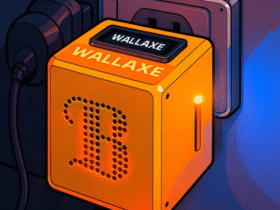There are high-risk assets in Tether reserves, says S&P Global.
USDT continues to be the third most valuable digital asset on the market, after bitcoin and ether.
The credit rating agency S&P Global has reassessed the credit rating of the stablecoin USDT, issued by the company Tether, downgrading it due to concerns that it could lose its peg with the US dollar.
This change implies a move from a rating of 4 (limited) to 5 (weak)signaling an increase in perceived risk over the digital asset’s ability to maintain its fixed one-to-one value with the dollar.
For a stablecoin like USDT, loss of peg means its market value drops below one dollar, eroding users’ confidence in its stability and liquidity. As Criptopedia, the educational section of CriptoNoticias, explains, more than a simple cryptocurrency, USDT represents a bridge between the digital world and the traditional financial system.
He analysis S&P Global reflects that there is an increase in riskier assets backing USDT reserves since its last review.
Rating 5 (weak) implies greater uncertainty about the issuer’s ability to meet its obligations. S&P Global justifies the negative revision by citing “increased exposure to high-risk assets in USDT reserves over the past year and persistent gaps in information disclosure.”


The biggest concern lies with Tether’s holding of bitcoin (BTC), which represents approximately 5.6% of USDT in circulation. This proportion, according to the rating agency, exceeds the overcollateralization margin of 3.9%, indicating that the reserve may not fully absorb a decrease in the price of BTC.
Despite the warning, the Tether stablecoin remains the third-largest digital asset by market capitalization, worth $305 billion, dominating its sector with a 60% quota.
In response, Paolo Ardoino, CEO of Tether, critical traditional grading models, arguing that are designed for classic financial institutions that have historically collapsed despite his high ratings.
Ardoino assured that Tether is an overcapitalized and profitable company, without toxic reserves, and sees the concern of the “traditional financial propaganda machine” as a sign that Tether challenges the current financial system.






Leave a Reply